Göttingen
| Göttingen | |
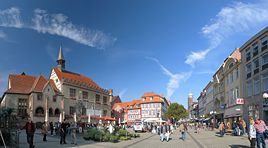 |
|
| Coat of arms | Location |
|
|
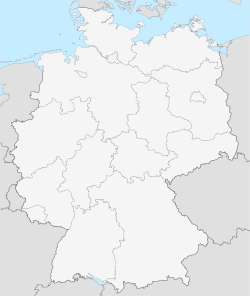 |
| Administration | |
| Country | Germany |
|---|---|
| State | Lower Saxony |
| District | Göttingen |
| City subdivisions | 18 districts |
| Lord Mayor | Wolfgang Meyer (SPD) |
| Basic statistics | |
| Area | 117.27 km² (45.3 sq mi) |
| Elevation | 150 m (492 ft) |
| Population | 129,686 (30/12/2006) |
| - Density | 1,106 /km² (2,864 /sq mi) |
| Other information | |
| Time zone | CET/CEST (UTC+1/+2) |
| Licence plate | GÖ |
| Postal codes | 37001–37085 |
| Area code | 0551 |
| Website | goettingen.de |
Göttingen (listen, IPA: [ˈgœtɪŋən], Low German: Chöttingen IPA: [ˈçœtɪŋən]) is a college town in Lower Saxony, Germany. It is the capital of the district of Göttingen. The Leine river runs through the town. In 2006 the population was 129,686.
Contents |
General information
The origins of Göttingen lay in a village called Gutingi. This village was first mentioned in a document in 953. The city was founded between 1150 and 1200 to the north-west of this village and adopted its name. In medieval times the city was a member of the Hanseatic League and hence a wealthy town.
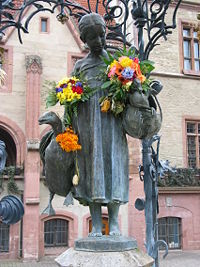
Today Göttingen is famous for its old university (Georgia Augusta, or "Georg-August-Universität"), which was founded in 1737 and became the most visited university of Europe. In 1837 seven professors protested against the absolute sovereignty of the kings of Hanover; they lost their offices, but became known as the "Göttingen Seven". They include some well-known celebrities: the Brothers Grimm, Heinrich Ewald, Wilhelm Weber and Georg Gervinus. Also, German chancellors Otto von Bismarck and Gerhard Schröder went to law school at the Göttingen university. Karl Barth had his first professorship here. Some of the most famous mathematicians in history, Carl Friedrich Gauss, Bernhard Riemann and David Hilbert were professors at Göttingen.
Like other university towns, Göttingen has developed its own folklore. On the day of their doctorate, postgraduate students are drawn in handcarts from the Great Hall to the Gänseliesel-Fountain in front of the Old Town Hall. There they have to climb the fountain and kiss the statue of the Gänseliesel (Goose girl). This practice is actually forbidden by law, but the law is not at all enforced. She is considered to be the most-kissed girl in the world. The impressive lion statues which stand nearby at the steps of the town hall are celebrated in Stephen Clackson’s Märchen "Die Traurigen Löwen von Göttingen" [1] set eight years after the foundation of the University.
Nearly untouched by Allied bombing in World War II (the informal understanding during the war was that Germany wouldn't bomb Cambridge and Oxford and the Allies wouldn't bomb Heidelberg and Göttingen), the inner city of Göttingen is now an attractive place to live with many shops, cafes and bars. For this reason, many university students live in the inner city and give Göttingen a young face. In 2003, 45% of the inner city population was only between 18 and 30 years of age.
Economically, Göttingen is noted for its production of optical and fine mechanical machinery, including the light microscopy division of Carl Zeiss, Inc. — the region around Göttingen advertises itself as "Measurement Valley". Unemployment in Göttingen was at 12.6% (2003).
The city's railway station to the west of the city centre is on Germany's main north-south railway.
Göttingen has two professional Basketball teams; both the men's and women's play in the Basketball-Bundesliga. For the season 2007/2008 both teams will play in the 1st division.
History
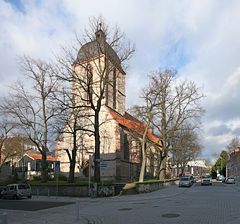
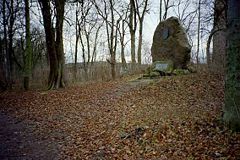
Early history
The origins of Göttingen can be traced back to a village named Gutingi to the immediate south-east of the eventual city. The name of the village probably derives from a small creek, called the Gote, that once flowed through it. Since the ending -ing denoted "living by", the name can be understood as "along the Gote". Archaeological evidence points towards a settlement as early as the 7th century AD. It is first historically mentioned in a document by the Holy Roman Emperor Otto I in 953 AD, in which the emperor gives some of his belongings in the village to the Moritz monastery in Magdeburg. Archaeological findings point to extensive commercial relations with other regions and a developed craftsmanship in this early period.
Palatinate fortress of Grone
In its early days, Gutingi was overshadowed by Grona, historically documented from the year 915 AD as a newly built fortress, lying opposite Gutingi across the Leine river. It was subsequently used as an Ottonian palatinate fortress, with 18 visits of kings and emperors documented between 941 and 1025 AD. The last Holy Roman Emperor to use fortress Grona (said to have been fond of the location), Heinrich II (1002-1024), also had a church built in the neighboring Gutingi, dedicated to Saint Alban. The current church building that occupies this site, the St. Albani church, was built in 1423.
The fortress then lost its function as palatinate in 1025, after Heinrich II died there after having retreated to it in ill health. It was subsequently used by the lords of Grone. The fortress was destroyed by the then citizens of Göttingen between 1323 and 1329 AD, and subsequently leveled to the ground by Duke Otto I during his feuds with the city of Göttingen in 1387 AD.
Founding of the City Göttingen
With time, a trading settlement started to form at the river crossing of the Leine to the west of the village, which took over its name. It is this settlement that was eventually given city rights. The original village remained recognizable as a separate entity until about 1360 AD at which time it was included within the town's fortification.
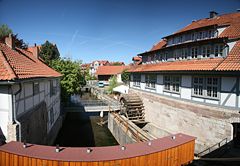
Likely between 1150 and 1180 AD the present city was founded, although the exact circumstances are not known. It is presumed that Henry the Lion, duke of Saxony and Bavaria, founded the city. The configuration of the streets in the oldest part of the town are in the shape of a pentagon, and it has been proposed that the inception of the town followed a planned design. At this time the town was known by the name Gudingin or also Gotingen. Its inhabitants obeyed welfish ownership and ruling rights, and the first Göttingen burghers are mentioned, indicating that Göttingen was already organised as a true city. It was not, however, an Free Imperial City (German: Reichsstadt), but subject to the Welf dukes of Brunswick-Lüneburg. Henry the Elder (V) of Brunswick, oldest son of Henry the Lion and brother of Holy Roman Emperor Otto IV, is given as the lord over Göttingen between 1201 and 1208 AD. The original Welf residency in the town consisted of a farm building and stables of the Welf dukes, which occupied the oldest part of the city fortifications built prior to 1250 AD. In its early days, Göttingen got involved in the conflicts of the Welfs with their enemies. The initial conflicts in the first decades of the 13th century benefited the burghers of Göttingen, which could use the political and military situation to be courted by various parties, and hence forcing the Welf town lords to certain compromises with the town. In a document from 1232 AD, Duke Otto the Child gave the citizens of Göttingen the same rights they held at the time of his uncles Otto IV and Henry the Elder of Brunswick. These included privileges concerning self-governance of the town, protection of traders, and the facilitation of trade. The document also promises that the town is not to fall into the hands of other powers. It is to be assumed that at this time Göttingen possessed a city council of burghers. Names of council members are first given in a document from 1247 AD.
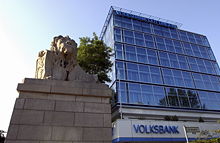
Expansion of Göttingen
The area secured by the initial fortification included the old market place, the old town hall, the two main churches, St. Johannes and St. Jacobi, the smaller church St. Nikolai, as well as the large Weender, Groner, and Rote streets. Outside of the fortification in front of the Geismar city gate lay the old village with the church St. Albani, which was subsequently known as Geismarer altes Dorf (the Geismar old village). This village was only to a limited extent under welfish control and thus could not be included in the town's privileges and fortification.
The town was initially protected by a rampart, as of the late 13th century then also by walls on top of the moundlike ramparts. Of these only one tower with a short stretch of the wall survive in the Turmstraße (tower street). The thus protected area included maximally 600 by 600 meters (roughly 650 by 650 yards), or about 25 hectares. This made it smaller than contemporary Hanover but larger than the neighboring Welfish towns of Northeim, Duderstadt, and Münden.
The creek Gote that flowed south of the walls of the town was connected to the river Leine via a channel at about this time, and the waterway has since been known as the Leine Canal.
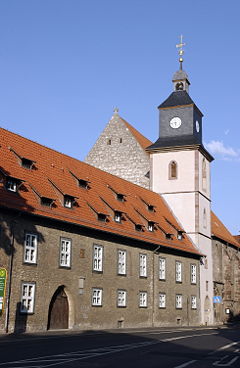
After the death of Otto the Child in 1257 AD, his sons Albert I of Brunswick (the Great) and Johann inherited their father's territories. Duke Albrecht I first governed for his brother, a minor. Subsequently the brothers agreed to divide the territory between them in 1267, effective 1269. The city of Göttingen went to Albert I, and was inherited by his son Duke Albert II "the Fat" in 1286. Albert II chose Göttingen as his residence and moved into the Welf residency, which he rebuilt into a fortress known as the Balrhus, after which the Burgstraße (fortress street) is named.
Albert II attempted to gain further control over the economically and politically rapidly growing town by founding a new town (German: Neustadt) west of the original town, across the Leine Canal and outside of the Groner city gate. This competing settlement consisted of a single street, no more than eighty yards long, with houses to either side of the street. The Duke, however, could not prevent Göttingen's westward expansion nor the success of the Göttingen City Council in effectively checking any hope of economic development in the Neustadt. The St. Marien Church was built to the south of the Neustadt which together with all adjoining farm buildings was given to the Teutonic Knights in 1318.
After the failure of the new town, the City Council bought up the uncomfortable competition to the west in 1319 for three hundred Marks, and obtained the promise from the Duke that he would not erect any fortress within a mile of the town.
Two monasteries were also founded at the edge of the town at the end of the 13th century. In the east, in the area of today's Wilhelmsplatz, a Franciscan monastery was built as early as 1268, according to the city chronicler Franciscus Lubecus. Since the Franciscans walked barefoot as part of their vow of poverty, they were known colloquially as the barefoot, and gave the name Barfüßerstraße (Barefoot Street) to the road that led to the monastery. In 1294 Albert the Fat permitted the founding of a Dominican monastery along the Leine Canal opposite the Neustadt, for which the Pauliner church, completed in 1331, was constructed.
Jews settled in Göttingen in late 13th century. On March 1, 1289, Duke gave the Göttingen City Council permission to allow the first Jew, Moses, to settle inside the town limits. The subsequent Jewish population lived predominantly close to the St. Jacobi church on the Jüdenstraße.
Growth and independence
After Albert the Fat's death in 1318, Göttingen passed to Otto the Mild (d. 1344), who governed over both the "principality of Göttingen" (German: Fürstentum Göttingen) and the territory of Brunswick. These dukes joined Göttingen and surrounding towns in battles against aristocratic knights in the surroundings of Göttingen, in the course of which the citizens of Göttingen succeeded in destroying the fortress of Grone between 1323 to 1329 AD, as well as the fortress of Rosdorf. Since Otto the Mild died without leaving children, his brothers Magnus and Ernest divided the land between themselves. Ernest I received Göttingen, the poorest of all the Welf principalities, which was to remain separate from Brunswick for a long time to come. At this time, the territory consisted of the regions formerly owned by Northeim, the towns Göttingen, Uslar, Dransfeld, Münden, Gieselwerder and half of Moringen. Not much is known about the rule of Duke Ernest I, but it is generally assumed that he continued to fight against aristocratic knights.
Ernest I was succeeded after his death in 1367 by his son Otto I of Göttingen (the Evil; German: der Quade) (d 1394), who initially lived in the city's fortress and attempted to make it a permanent Welf residency. The epithet the Evil came from Otto I's incessant feuds. Breaking with the policies of his predecessors, he frequently aligned himself with the aristocratic knights of the neighborhood in battles against the cities, whose growing power disturbed him. Under Otto the Evil Göttingen gained a large degree of independence. After losing control of the provincial court at the Leineberg in to Göttingen in 1375, Otto finally tried to impose his influence on Göttingen in 1387 AD, but with little success. In April 1387 Göttingen's citizens stormed and destroyed the fortress within the city walls. In retaliation, Otto destroyed villages and farms in the town's surroundings. However, Göttingen's citizens gained a victory over the Duke's army in a battle between the villages of Rosdorf and Grone, under their leader Moritz of Uslar, forcing Otto to acknowledge the independence of the town and its surrounding properties. 1387 thus marks an important turning point in the history of the town. Göttingen's relative autonomy was further strengthened under Otto's successor Otto II "the One-eyed" of Göttingen (German: Cocles/der Einäugige), not least because the Welf line of Brunswick-Göttingen died out with Otto II, and the resulting questions surrounding his succession after his abdication in 1435 destabilized the regional aristocracy.
After Duke Otto I of Göttingen relinquished his jurisdiction over Jews to the town of Göttingen in the years 1369/70, the conditions for Jews in Göttingen greatly deteriorated, and several bloody persecutions and evictions from the town followed. Between 1460 to 1599 no Jews lived in Göttingen at all.
The trend towards ever diminishing Welf influence over the town continued until the end of the 15th century, although the town officially remains a Welf property. Nevertheless it is counted in some contemporaneous documents among the Imperial Free Cities.
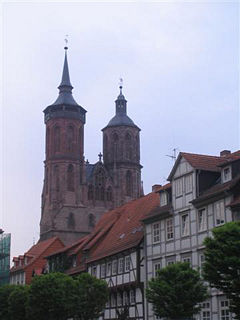
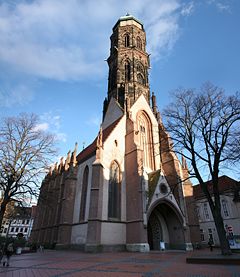
The 14th and 15th centuries thus represent a time of political and economic power expansion, which is also reflected in the contemporary architecture. The expansion of the St. Johannis church to a Gothic hall church began in the first half of the 14th century. As of 1330 a Gothic structure also replaced the smaller St Nikolai church. After completion of the work on the St Johannis church, the rebuilding of the St Jacobi church was begun in the second half of the 14th century. The original, smaller church that preceded this building was likely initiated by Henry the Lion or his successor, and functioned as a fortress chapel to the city fortress that lay immediately behind it. The representative old town hall was built between 1366 and 1444.
Around 1360 the town's fortifications were rebuilt to encompass now also the new town and the old village. In the course of this construction work, the four city gates were moved farther out, and the town's area grew to roughly 75 hectares. The city council forged alliances with surrounding towns, and Göttingen joined the Hanseatic League in 1351 (see below). Göttingen also gained Grona (currently Grone) and several other surrounding villages in the Leine valley.
Reason for the progressive power increase in the late Middle Ages was the growing economic importance of the town. This depended largely on its good connection to the north-south trading route, particularly the north-south trading route that followed the Leine valley, which greatly aided particularly the local textile industry. Next to the guild of linen weavers, the guild of wool weavers gained in importance. The wool for the weaving originated in the immediate surroundings of the town, where up to 3000 sheep and 1500 lambs were herded. Woolen cloth was successfully exported all the way into the Netherlands and to Lübeck. As of 1475 the textile production was augmented by the addition of new weavers who brought new weaving techniques to Göttingen and solidified the position of the town as a textile exporter for three generations. Only at the end of the 16th century came the decline of the local textile industry when Göttingen could not compete anymore with cheap English textiles.
Göttingen's traders also profited from the important trading route between Lübeck und Frankfurt am Main. Göttingen's market gained above-regional importance. Four times a year traders from other regions came to Göttingen in great numbers. Göttingen also joined the Hanseatic League, to the first meeting of which it was invited in 1351. Göttingen's relationship with the Hanseatic League remained distant, however. As an interior town, Göttingen enjoyed the economic connections of the League, but it did not want to get involved in the politics of the alliance. Göttingen only became a paying member in 1426, and left the League already in 1572.
From the loss of independence until today
After several dynastic splits and shifts in power that followed the death of Otto the One-eyed, Duke Eric I "the Elder" of Calenberg annexed the principality of Göttingen, which became an integral part of the Calenberg duchy. The town refused to pay homage to Eric I in 1504, and as a result, Eric I had the Emperor Maximilian I, declare the town of Göttingen outlawed. The subsequent tensions economically weakened Göttingen, leading to the town finally paying its homage to Eric I in 1512. Afterward the relationship between Eric and the town improved, because of Eric's financially dependence on Göttingen.
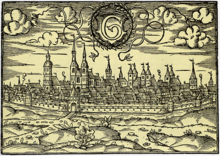
In 1584 the city came into possession of the dukes of Brunswick-Wolfenbüttel, also of the Welf dynasty, and in 1635 it passed to the house of Lüneburg, which ruled it thenceforth. In 1692 it was named as part of the indivisible territory Electoral state of Hanover.
The university of Göttingen was founded in 1737 by George II August, King of Great Britain and prince-elector of Hanover. During the Napoleonic period the city was briefly in the hands of Prussia in 1806, turned over in 1807 to the newly created Napoleonic Kingdom of Westphalia, and returned to the state of Hanover in 1813 after Napoleon's defeat. In 1814 the prince-electors of Hanover were elevated to kings of Hanover.
In 1854 the city was connected to the new railway system. Today, Göttingen station is served by the high speed trains (ICE).
After the defeat of Austria and her Hanover ally at the hands of the Kingdom of Prussia in the war of 1866, Göttingen and the Kingdom of Hanover became part of Prussia as the Province of Hanover.
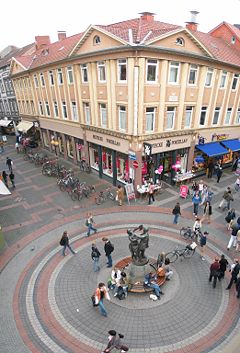
During the Third Reich, the university suffered greatly as many of its greatest minds emigrated early after the rise to power of Adolf Hitler, or were forced to leave later. This was due to the anti-Semitic policies of the time, as many of the excellent professors and scholars were Jewish. Not to forget that the insistence in a "German physics" prevented researchers from applying Einstein's discoveries, which was of course nearly impossible. After the war the once-famous university had to be rebuilt almost from scratch, especially the physics and mathematics departments, a process which continues until today. The Göttingen synagogue was destroyed in the Reichspogromnacht on November 9 1938. Many of the Jews of Göttingen were killed in the extermination camp. Also, there was a concentration camp for adolescents in Moringen which was liberated in 1945.
During the Allied bomb attacks, Göttingen received comparatively little damage. From July 1944, Göttingen experienced some heavier air attacks, but these were mainly around the main rail station. The historic old town was largely untouched. Overall, only about 120 deaths were caused by the air attacks, a comparatively small number. The neighbouring cities of Kassel, Hanover and Braunschweig, however, felt the full force of the allied bombing experience. Göttingen at this point was crowded with bombed out refugees from other areas. Also, because the city had many well-equipped hospitals, Göttingen during the war had up to four thousand wounded German soldiers being cared for. Göttingen was also fortunate in that before the American army arrived on April 8th, 1945, all German combat units had left the area, and so the city experienced no major fighting.
After the war the city and district of Göttingen joined the administrative district (Regierungsbezirk) of Hildesheim. In a reform in 1973 the district of Göttingen was enlarged by incorporating the dissolved districts of Duderstadt and Hannoversch Münden.
Cultural relevance
Prior to the period of German romanticism, a group of German poets that had studied at this university between 1772 and 1776, formed the Göttinger Hainbund or "Dichterbund" ('circle of poets'). Being disciples of Klopstock, they revived the folksong and wrote lyric poetry of the Sturm und Drang period. Their impact was essential on romanticism in the German-speaking area and on folklore in general.
Since the 1920s, the town has been associated with the revival of interest in the music of George Frideric Handel. The International Handel Festival Göttingen is held each summer with performances in the Stadthalle Göttingen and a number of churches.
Incorporations
The following communities were incorporated in the city of Göttingen:
- 1963: Herberhausen
- 1964: Geismar, Grone, Nikolausberg and Weende
- 1973: Deppoldshausen, Elliehausen, Esebeck, Groß Ellershausen, Hetjershausen, Holtensen, Knutbühren and Roringen
Population
The city's population has increased since the Middle Ages. With the arrival of the early modern period, the growth rate accelerated extremely. In 1985, a peak of 132,100 inhabitants was reached. The population of 2004 was 129,466 inhabitants. Of those, around 24,000 were students.
Religion
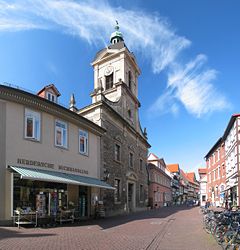
Since the Middle Ages, the area of Göttingen has been part of the archbishopric of Mainz, and most of the population was Catholic. Starting in 1528 the teachings of church reformer Martin Luther became more and more popular in the city. In 1529 the first Protestant sermon was preached in the church Paulinerkirche, a former Dominican monastery church. For the following centuries nearly all the people in the city were Lutherans. As of today, the area of Göttingen is part of the Protestant Lutheran state church of Hanover. Apart from the Lutheran, there are several other Protestant churches in Göttingen (Freikirchen). In 1746 there were once again Catholic services in Göttingen, at first only for the students of the new university, but one year later for all the interested citizens. But it took until 1787 that the first Catholic church, Saint Michael, was built since the Reformation. In 1929 a second Catholic church, Saint Paul, was erected. Today, the major religions are Lutheran and Catholicism. Also, there has been a Baptist congregation since 1894, a Mennonite congregation since 1946, as well as a congregation of The Church of Jesus Christ of Latter-day Saints.
The existence of a Jewish community is documented since the 16th century. During the Third Reich, the synagogue was destroyed in the Reichsprogromnacht on November 9 1938, as were many others throughout Germany. The Jewish community was persecuted, and many of its members met their deaths in the concentration camps. In recent years, the Jewish community flourishes once again, with the immigration of Jewish people from the states of the former Soviet Union. 2004 the first Shabbat could be celebrated in the new Jewish community center.
Finally, there are many Islamic congregations. Islam gained a foothold in Göttingen, as it did in other German cities, with the immigration of the Turks during the Wirtschaftswunder in the 1960s and 1970s. They are the majority of Muslims in Göttingen. Other Muslims are of Arabic origin or come from Pakistan, Iran and India. There exists a representative mosque in the city district of Grone.
There is a secular trend in Germany, especially in eastern Germany, but also in the west, where a growing number of people are not baptised or leave the church. This trend was especially noticeable in the last decade of the passed century. Nowadays the situation has stabilised for larger churches, though.
Politics
A town council with 24 councillors dates from the 12th century. In 1319 this council took control of the new city district (Neustadt) just in front of the wall. The council election took place on the Mondays following Michaelmas (September 29). Starting in 1611 all citizens could elect the 24 counsellors. Previously this right was restricted and depended on income and profession. Afterwards, the council elected the Bürgermeister (mayor). In 1669 the number of councillors was reduced to 16, and later to 12. In 1690 the city administration was reorganised again. Then the council consisted of the judge, two mayors, the city lawyer (Syndikus), the secretary and eight councillors. All of these were appointed by the government. During the Napoleonic era the mayor was called Maire, and there was also a city council. In 1831 there was another reform of the constitution and the administration. The title of the mayor changed to Oberbürgermeister. In the following decades there were more reforms to the city administration, which reflected the constitutional and territorial reorganisations of Germany. During the Third Reich the mayor was appointed by the Nazi Party.
In 1946 the authorities of the British Occupation Zone, to which Göttingen then belonged, introduced a communal constitution which reflected the British model.
Coat of arms
The Coat of Arms of Göttingen shows in the top half three silver towers with red roofs on a field of blue. The lateral towers possess four windows each and are crowned by golden crosses. Around the central tower there are four silver balls. The city towers represent the status as city which is imbued with certain rights. In the bottom field there is a golden lion on a red field. This lion represents the lion of the Welf dynasty, which in its various branches ruled the area of Göttingen for 850 years. This Coat of Arms is documented for the first time in 1278. In some occasions the city used a more simple coat of arms. This was a black mayuscule "G" on a golden field. On top of the letter was a crown.
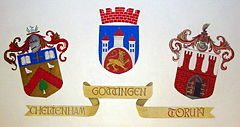
Twin towns
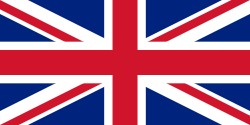 Cheltenham, United Kingdom (since 1951)
Cheltenham, United Kingdom (since 1951) Cramlington, United Kingdom (since 1969)
Cramlington, United Kingdom (since 1969) Pau, France (since 1962)
Pau, France (since 1962) Toruń, Poland (since 1978)
Toruń, Poland (since 1978) Wittenberg, Germany (since 1988)
Wittenberg, Germany (since 1988)
There has been a solidarity agreement with La Paz Centro in Nicaragua since 1989 which has, as of now, not yet led to a formal twinning agreement.
Notable people born in Göttingen
- Heinrich Ewald (November 16, 1803)
- Hans-Jochen Vogel (February 3, 1926)
- Bernhard Vogel (December 19, 1932)
- Herbert Grönemeyer (April 12, 1956)
- Gundula Krause (7 July, 1966)
- Sandra Nasic (May 25, 1976)
- Wolfgang Sartorius von Waltershausen (December 17, 1809)
Notable people who died in Göttingen
- Max Born (January 5, 1970)
- Johann Peter Gustav Lejeune Dirichlet (May 5, 1859)
- Carl Friedrich Gauss (February 23, 1855)
- Otto Hahn (July 28, 1968)
- David Hilbert (February 14, 1943)
- Felix Klein (June 22, 1925)
- Hermann Minkowski (January 12, 1909)
- Max Planck (October 4, 1947)
- Ludwig Prandtl (August 15, 1953)
- Lou Andreas-Salomé (February 5, 1937)
- Carl Ludwig Siegel (April 4, 1981)
- Wilhelm Eduard Weber (June 23, 1891)
Sports
Göttingen has:
- some soccer teams, that play in amateur leagues Sparta Göttingen Bezirksoberliga http://www.spartagoettingen.de/
- a cricket club
- bowling alley
- driving range
- an American football team
- a baseball team
- at least two skittles alleys.
- indoor swimming complex and a number of outdoor pools.
- a sports stadium (Jahn-Stadion)
- a basketball team (its playing in the first league in Germany since 2007)
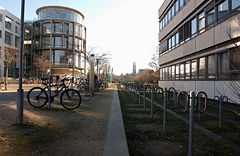
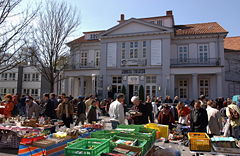
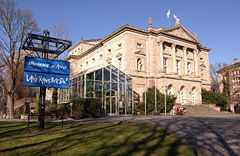
Universities and colleges
- Georg August University of Göttingen, http://www.uni-goettingen.de/
- German Aerospace Center, http://www.dlr.de/en/desktopdefault.aspx/tabid-343/470_read-664/
- Private University of Applied Sciences, http://www.pfh-goettingen.de/
- University of Applied Sciences and Arts, http://www.fh-goettingen.de
- Goethe-Institut Göttingen, http://www.goethe.de/goettingen/
- Max Planck Institute for Biophysical Chemistry
- Max Planck Institute for Experimental Medicine
- Max Planck Institute for History
- Max Planck Institute for Dynamics and Self-Organization
- German Primate Center, http://www.dpz.eu
Cultural establishments
Theatre
Göttingen has two professional theatres, Deutsches Theater in Göttingen and Junges Theater. In addition, there is ThOP (Theater im OP Göttingen ), a stage that mostly presents student productions.
Museums, collections, exhibitions
- The Göttingen City Museum (Städtisches Museum Göttingen) has permanent and temporary exhibitions of historical and artistic materials.
- The Ethnographic Collection of the University includes an internationally significant South Seas exhibition (Cook/Forster collection) and mostly 19th-century materials from the Arctic polar region (Baron von Asch collection) as well as major displays on Africa as its highlights.
- The Old City Hall (Altes Rathaus) has temporary art shows of local, regional, and international artists.
- The Paulinerkirche in the Historical University Library Building has various temporary exhibitions, usually of a historic nature.
The university has a number of significant museums and collections.
Intercultural gardens
Göttingen is home to four intercultural gardens and the German Association of International Gardens (Internationale Gärten e.V.).
External links
- Official website (German)
- Official website (English)
- International Handel Festival Göttingen
- Events and Nightlife Calendar for Göttingen
- Webcams in Göttingen
- Göttingen Baptist Church
- Göttingen branch of the Malteser Hilfsdienst
- Göttingen Webcam Göttingen online webcam
|
|||||||